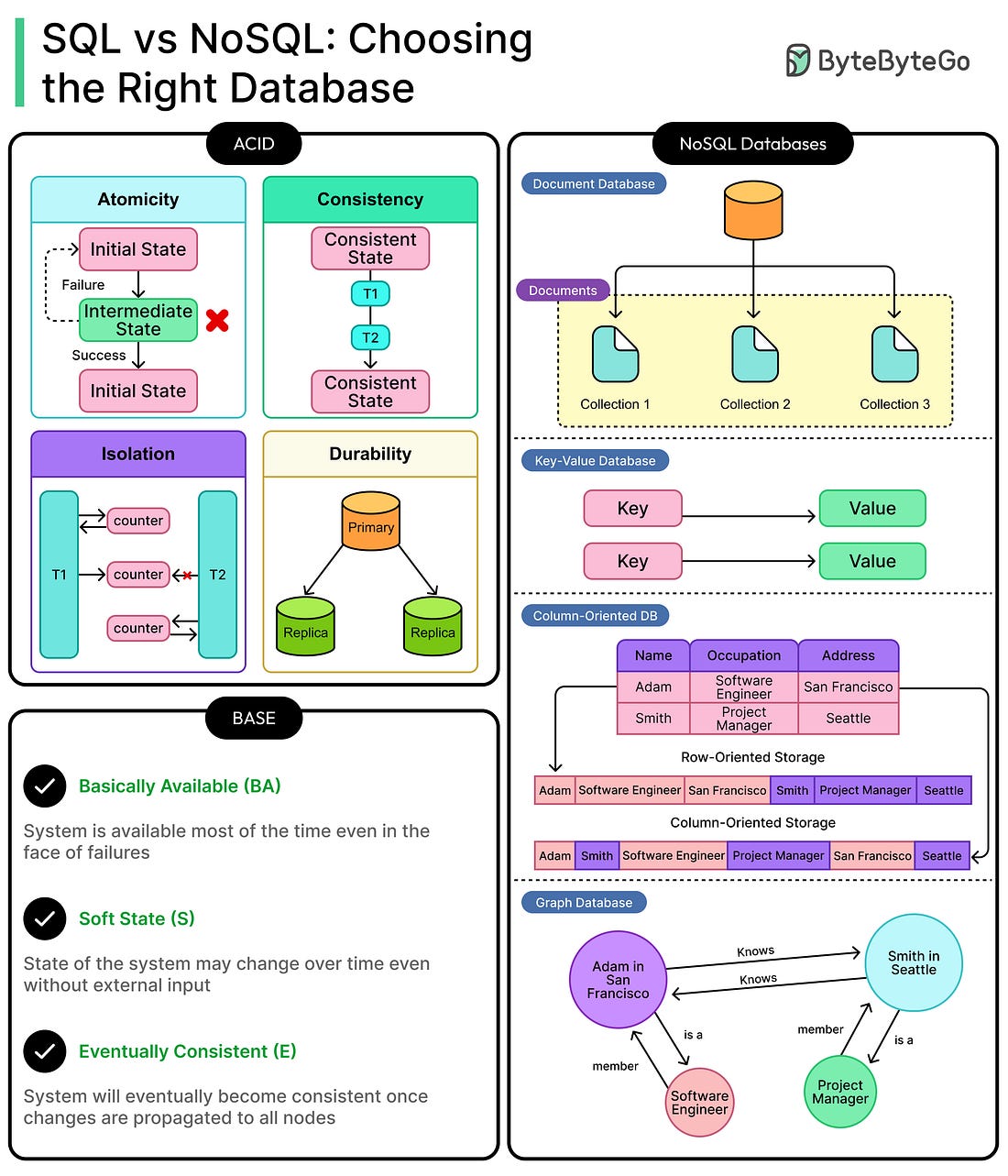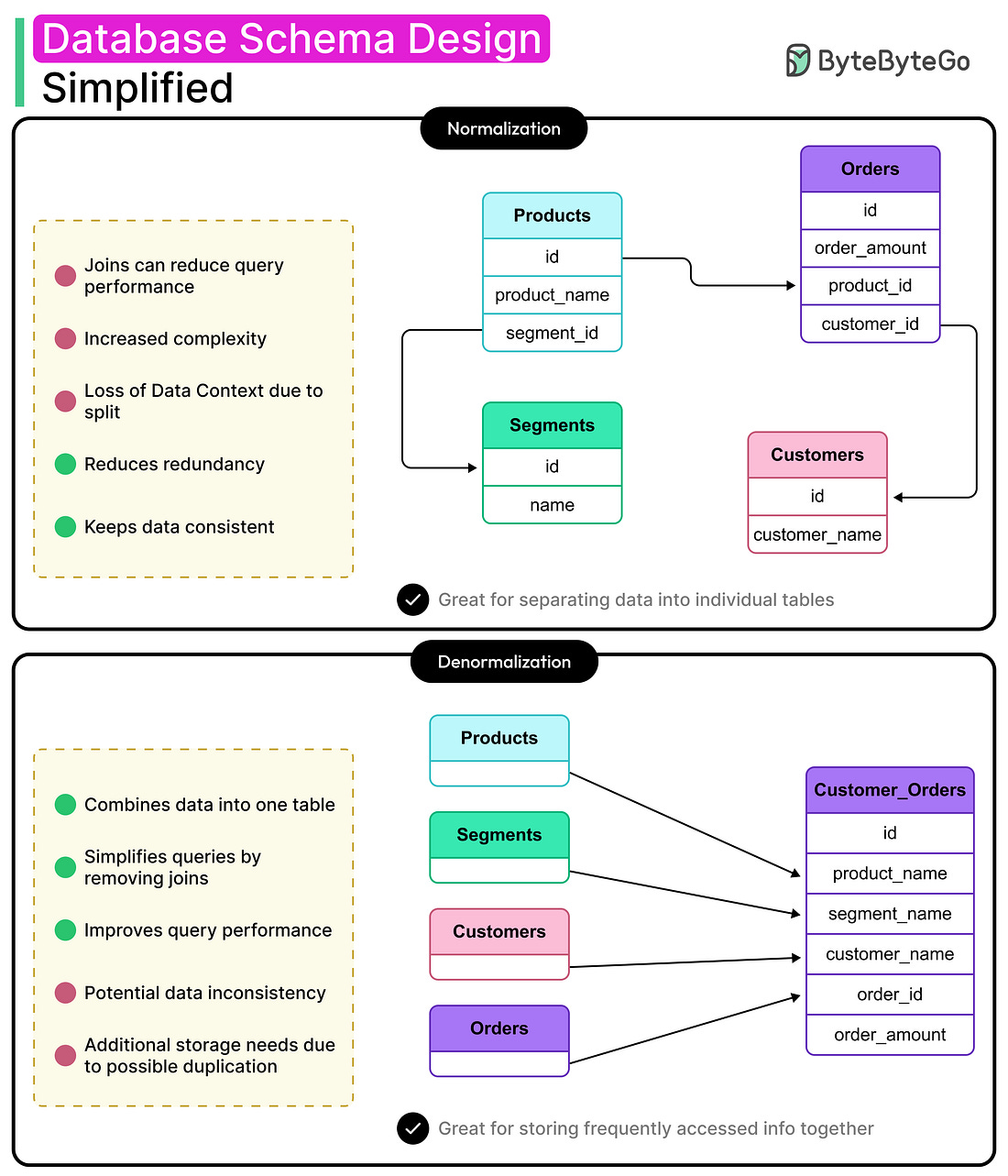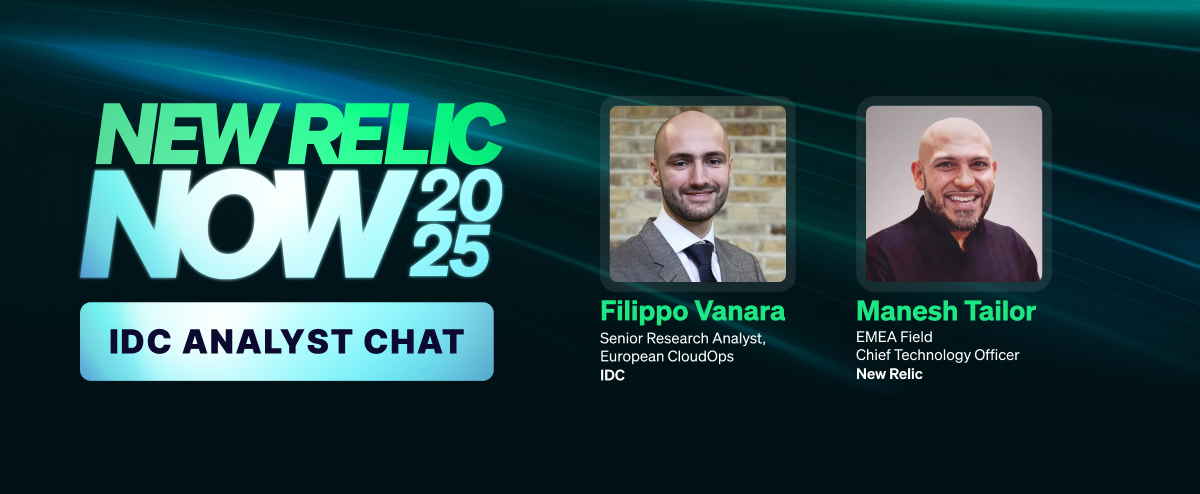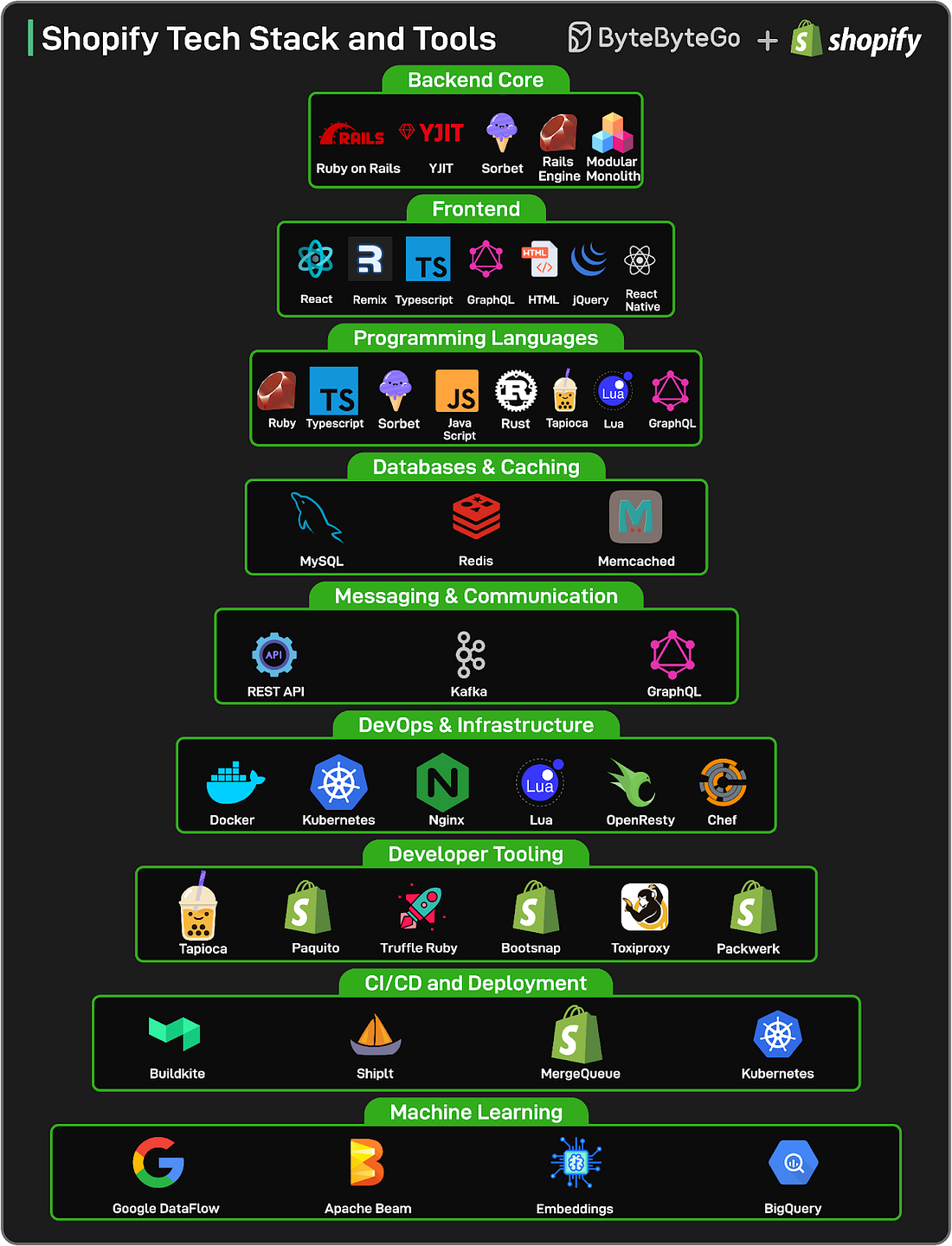Archives
- By thread 5265
-
By date
- June 2021 10
- July 2021 6
- August 2021 20
- September 2021 21
- October 2021 48
- November 2021 40
- December 2021 23
- January 2022 46
- February 2022 80
- March 2022 109
- April 2022 100
- May 2022 97
- June 2022 105
- July 2022 82
- August 2022 95
- September 2022 103
- October 2022 117
- November 2022 115
- December 2022 102
- January 2023 88
- February 2023 90
- March 2023 116
- April 2023 97
- May 2023 159
- June 2023 145
- July 2023 120
- August 2023 90
- September 2023 102
- October 2023 106
- November 2023 100
- December 2023 74
- January 2024 75
- February 2024 75
- March 2024 78
- April 2024 74
- May 2024 108
- June 2024 98
- July 2024 116
- August 2024 134
- September 2024 130
- October 2024 141
- November 2024 171
- December 2024 115
- January 2025 216
- February 2025 140
- March 2025 220
- April 2025 233
- May 2025 239
- June 2025 303
- July 2025 77
-
Cabin pressure
The Shortlist
Emerging ideas for leaders 




Curated by Alex Panas, global leader of industries, & Axel Karlsson, global leader of functional practices and growth platforms
Welcome to the latest edition of the CEO Shortlist, a biweekly newsletter of our best ideas for the C-suite. This week, we look closely at air travel and its new destinations. Please send your thoughts and ideas to us at Alex_Panas@McKinsey.com and Axel_Karlsson@McKinsey.com. Thank you, as ever.
—Alex and Axel
A phoenix rises. Remember five years ago, when it seemed like people might never again board a plane? Since then, the industry has staged a stunning comeback, to the delight of billions of passengers and more than a few executives. Today, airlines are confronting less existential but still material challenges. Low-cost carriers have hit some turbulence. Aircraft shortages loom. Our new report on the industry reveals who’s on the rise and who needs to refuel.
Birds of a feather. Who are all these people queuing at security? And why does my line always move slower than the others? We can’t help with the second question, but on the first, our research shows that a good many of your fellow passengers are Gen Zers and millennials on their way to a healthful retreat. That’s just one of many new directions for the $2 trillion wellness industry. Our fourth annual Future of Wellness survey explains all the latest developments.
We hope you find these ideas inspiring and insightful. See you in a couple of weeks with more McKinsey ideas for the CEO and others in the C-suite.Share these insights
This email contains information about McKinsey’s research, insights, services, or events. By opening our emails or clicking on links, you agree to our use of cookies and web tracking technology. For more information on how we use and protect your information, please review our privacy policy.
You received this email because you subscribed to The CEO Shortlist newsletter.
Copyright © 2025 | McKinsey & Company, 3 World Trade Center, 175 Greenwich Street, New York, NY 10007
by "McKinsey CEO Shortlist" <publishing@email.mckinsey.com> - 04:56 - 13 Jun 2025 -
How younger consumers are reshaping the wellness industry
On McKinsey Perspectives
5 types of customers 




Brought to you by Alex Panas, global leader of industries, & Axel Karlsson, global leader of functional practices and growth platforms
Welcome to the latest edition of Only McKinsey Perspectives. We hope you find our insights useful. Let us know what you think at Alex_Panas@McKinsey.com and Axel_Karlsson@McKinsey.com.
—Alex and Axel
—Edited by Belinda Yu, editor, Atlanta
This email contains information about McKinsey's research, insights, services, or events. By opening our emails or clicking on links, you agree to our use of cookies and web tracking technology. For more information on how we use and protect your information, please review our privacy policy.
You received this email because you subscribed to the Only McKinsey Perspectives newsletter, formerly known as Only McKinsey.
Copyright © 2025 | McKinsey & Company, 3 World Trade Center, 175 Greenwich Street, New York, NY 10007
by "Only McKinsey Perspectives" <publishing@email.mckinsey.com> - 01:49 - 13 Jun 2025 -
Explore Our Advanced Marquee Tents for Your Next Project!
Dear Info,
Do you want to explore marquee tent for your project?
We offers:
-Advanced outdoor tent: Pole tent, Tension tent and Frame tent.
-Factory-direct pricing; Global supply.
Sample available for evaluation.
Let’s connect.
Warm regards
Chris
by "chris" <chris@jiangshunleisure.com> - 08:36 - 12 Jun 2025 -
Make work easier: The charm of CONVEY SUNTON precision tools
At CONVEY SUNTON, we provide premium milling tools, inserts, drilling tools, and machine tool accessories designed to meet the demands of modern manufacturing. Trusted by professionals worldwide, our products deliver unmatched precision, durability, and efficiency.Why Choose Us?⚙️ Comprehensive Range – From cutting-edge tools to essential accessories, we have it all.⚙️ Precision Engineering – Built for high performance and reliability.⚙️ Global Support – Expert service and solutions for every industry.Industries We ServeAutomotive, aerospace, metalworking, and beyond.Upgrade your tools today! Visit www.conveysunton.com to explore our range and request a quote.CONVEY SUNTONEmpowering Manufacturing Excellence.
by "Arai Taki" <takiarai627@gmail.com> - 06:48 - 12 Jun 2025 -
Optimisation des cycles de développement électronique par prototypage précis
Cher Info,
Dans la R&D produit, la « validation rapide » et le « contrôle des coûts » sont d’égale importance. Nous présentons fièrement notre forfait spécial de prototypes PCB, vous permettant de concrétiser vos designs de circuits au prix d’un café :
▸ Prototype PCB 2 couches : 5 USD/modèle (10 pièces incluses, max. 10x10cm, matériau FR-4)
▸ Prototype PCB 4 couches : 25 USD/modèle (5 pièces incluses, avec contrôle d’impédance)
Nos avantages clés en bref :
✔ Rapidité fulgurante : Les commandes standard sont expédiées en 48 heures. Avec DHL Express/FedEx, la plupart des destinations mondiales reçoivent les colis en 3-5 jours.
✔ Qualité industrielle : Procédés d’immersion d’or/de pulvérisation d’étain, largeur de ligne minimale 3mil, précision de position de trou ±0,05mm — idéal pour les circuits haute précision.
✔ Sécurité totale de bout en bout : Vérification gratuite des fichiers Gerber à la commande, rapports de test complets après prototypage, et support technique post-vente pour une traçabilité complète.
Des laboratoires universitaires aux équipes de startups, des développements de produits uniques aux projets en série, nous avons déjà pris en charge plus de 100 000 ingénieurs. Commandez dès maintenant pour bénéficier de notre Forfait R&D :
Faites accumuler 10 prototypes, obtenez 1 design d’optimisation PCB gratuit !
Intéressé ? Répondez pour une consultation 1 sur 1 avec nos spécialistes.
Nous sommes impatients de collaborer avec vous !Jack Wang
Tel/WhatsApp/WeChat:+86 13827484454
by "Omario Maike" <omariomaike@gmail.com> - 05:25 - 12 Jun 2025 -
Re: Manufacturing vendor of kitchenware / Supplier of Wincy
Dear Info,
Good morning. This is Daisy from Yangjiang Zhongyang Kitchenware Co., Ltd.
We are a professional supplier of kitchenware products for over 15 years. Our strength are Quality, Honesty, Service and Innovation, we have served over five hundreds clients from more than 80 countries. 90% of them are very satisfied with our products and service.
Should you have interest in more details, let us know,we’ll be glad to assist any time.
Best regards,
Daisy
by "Bocskor Franty" <bocskorfranty@gmail.com> - 03:39 - 12 Jun 2025 -
Your Trusted Partner in Global Steel Supply
Dear Info,
Greetings from Tianjin Haojixuan International Trade Co., Ltd.
We specialize in the export of high-quality steel products, leveraging long-term partnerships with renowned Chinese mills like Shougang, HBIS, and BAOSTEEL. Our product portfolio covers various categories such as construction steel, stainless steel, tinplate, and electrical steel, tailored to meet diverse project requirements. Processing to plate or narrow strip is our advantage.
With advanced logistics facilities and a dedicated team, we ensure smooth delivery and efficient support for our clients worldwide. Whether it’s small-scale orders or large infrastructure projects, our solutions are designed to offer reliability and quality.
Let me know if you’d like to explore further or discuss specific requirements. It would be a pleasure to collaborate and support your steel needs.
Best regards,
TIANJIN HAOJIXUAN INTERNATIONAL TRADE CO.,LTD
Tel: +86 22 58711385
Fax: +86 22 58711385
Phone/Whatsapp/wechat: +86 18822768194Address: Office B-1102, Wanda Plaza, Hedong District, Tianjin, China
by "Sales003" <Sales003@cnhjxsteel.com> - 02:19 - 12 Jun 2025 -
LAST CALL !!! Essential Business And Financial Acumen (15 & 16 July 2025)
Please call 012-588 2728
email to pearl-otc@outlook.com
HYBRID PUBLIC PROGRAM
ESSENTIAL BUSINESS AND FINANCIAL ACUMEN
(** Choose either Zoom OR Physical Session)
Remote Online Training (Via Zoom) &
Wyndham Grand Bangsar Kuala Lumpur Hotel (Physical)
(SBL Khas / HRD Corp Claimable Course)
Date : 15 July 2025 (Tue) | 9am – 5pm By Joyce
16 July 2025 (Wed) | 9am – 5pm . .
OVERVIEW
In today’s volatile business conditions, there is a need for all workplace personnel to grasp, understand and apply fundamentals of business and financial acumen to ensure their organisations achieved success.
By acquiring business acumen, it will enable them to better understand to add value in their daily business activities. Financial acumen is important because ability to understand financial indicators and manage financial resources enables effective decision in investment and plan financial strategies to stir businesses during uncertain times. These 2 days programme will increase financial and business acumen.
Who should attend: Any person who had no formal training in key basics -intermediate level business acumen and basic finance but wish to enhance business acumen and increase financial intelligence for personal mastery and business success.
OBJECTIVES
On completion of the programme, participants will be able to:-
1. Master the essentials key framework of business strategies and importance of setting business goals.
2. Understand how business strategy is translated into financial numbers via strategic planning process
3. Identify key financial indicators and issues concerns in personal and business financial management.
4. Know how to interpret key financial indicators to make good finance decisions.
5. Understand the concepts, language and basic rules of accounting & finance to interpret financial statements
6. Equip oneself with business financial knowledge in order to effectively manage financials in a business organization.
TRAINING APPROACH
Where appropriate, activities will include the following:
· Lecture & Videos
· Faciliated Group Discussions & Spot Quiz
· Practical financial analysis exercises using excel and case studies
· Board games
DURATION
2 days (14 hours)
OUTLINE OF WORKSHOP
Module 1: Building Business Acumen
- Common business issues faced today
- Identify value add business activities and reduce value destroying activities
- Strategic planning, execution and tracking process
- Setting key targets and execute action plan to mitigate actual results versus budget/forecast.
- Interpret business variance reports.
Module 2: Financial Knowledge: Understanding financial statements
- Essential Business Financial Terminology
- Understand BASIS framework for understanding importance of financial statements
- Profit & Loss, Balance Sheet and Free Cash flow for personal financial management.
Module 3: Business Financial Management
- Learn the golden rule of financial management
- Why rich companies get richer?
- Cash versus profit measures – Which is more important
- Passive income/revenue versus active income/revenue sources
- Application of finance terminologies in day-to-day life with examples.
- Which financial statements is used to understand the true profitability of a company?
- Calculate, understand and interpret key financial indicators.
- Real life application of financial knowledge in running successful businesses
- Working capital formula and application.
- Managing investments by understand calculation of return on investment (ROI).
o Learning methodologies: Practical Exercises
Module 4: Application of Knowledge: Strategic planning
- Preparation of key forecast data linked to business strategies via excel.
- Group presentation.
Module 5: Cashflow board games.
- Knowing the games rules
- Selection of players, briefing of roles – 6 players, one banker and one auditor
- Session 1 Challenge: Getting Out From the Active Income Trap/Rat Race
- Session 2 Challenge: Building Your Wealth Legacy and Kingdom
- Debriefing and Self Reflection
** Certificate of attendance will be awarded for those who completed the course
ABOUT THE FACILITATOR
JOYCE
Chartered Accountant, Fellow ACCA UK (Year 2008) and MIA (Year 2003)
Certified Train the Trainer (TTT), PSMB, 2015 No: 13320
Certified Neuro Linguistic Programme (NLP) Practitioner & Certified TimeLine Therapy NLP Coach, 2017 (ABNLP) & Licensed Hypnotherapist (Association of Hypnotherapy Practitioners Malaysia AHPM 2017)
Certified Change Management Practitioner (PROSCI USA – 2017)
Joyce is a Fellow Member of Chartered Association of Certified Accountants (ACCA), United Kingdom (UK) and a Chartered Accountant member of Malaysia Institute of Accountants (MIA). Her career began in one of the largest Malaysia conglomerate, Berjaya Group of Companies in role of a group financial accountant. She then moved into telecommunications (Maxis Communications, Nokia Networks) and ICT industry (IBM Malaysia) in various roles in management, business & operational finance, finance analysis, planning & budgeting. Since year 2012 & beyond, she was headhunted to join one of the established regional and global FMCG food/beverage, finance tech and recently, Avon, a global cosmetics single and multi -level marketing industry in a senior commercial finance leadership role.
Her interest in training and facilitation began in Nokia Networks Malaysia when she was requested to train business managers the essentials of finance analysis, Sarbannes Oxley (SOX) compliance requirements and interpretation of financials.
Due to passion and interest in public speaking, training and development she was the Past President of Malaysian Insititute of Human Resource Management (MIHRM) Toastmasters Club in year 2007-2008. She successfully obtained Advance Communication Bronze, Advanced Communication Silver (ACB, ACS) and Competent Leader (CL) communication awards from Toastmasters International, USA. In addition, she was Past President of Rotaract Club of Port Klang Centennial, part of Rotary International Organisation.
What you can expect from Joyce is the ability to explain some how complex financial concepts in layman’s terms. Plus point is her vast experience in business, finance, accounting & people management gained in Malaysia PLCs and global multi-national companies will enriches participants’ knowledge and increases their aptitude for appreciating the intricate subject of Finance and Management. She also familiar with training of junior accountants in shared services accounting function environment due to exposure in IBM Malaysia in shared services regional accounting & finance center.
She has conducted various programs such as:
1. Finance for Non Finance Personnel & Managers
2. Use of Financial Information for Strategic Cost Management
3. Effective Financial Management.
4. Effective Credit Control Management and Processes
5. Business Accounting & Accounting Functions
6. Budgeting & Strategic Planning
7. Financial Wellness & Literacy Workshop: Money and Me programmes.
8. Accounting standards workshop and training
The list of clients who had benefitted from her expertise were:
1. PMI Industries Sdn Bhd, & Mackenzie Industries (subsidiaries of Wah Seong Group)
2. Star Media Radio Group of Companies
3. MyWIN Academy Berhad (Prime Minister’s Department)
4. Wah Seong Group Corporation Berhad
5. Clipsal Manufacturing (Schneider Electric)
6. Bintulu Development Authority (BDA)
7. Sudong (subsidiary company of Singtel Telecommunications Inc) Malacca & Klang
8. UMW Corporation Berhad SL1M programmes
9. Gentpac Malaysia (Shared Services Accounting and Finance Center)
10. UEM Edgenta Malaysia Berhad
11. Construction Industrial Development Berhad (CIDB)
12. Malaysian Communications and Multimedia Commission (MCMC)
13. Amway Malaysia Holdings Berhad
14. Salcon Engineering Berhad
15. Malakoff Corporation Berhad (MCB) and subsidiaries.
16. Human Resource Development Fund (HRDF) Finance Public Programmes: PENJANA for Small & Medium Size (SME)
(SBL Khas / HRD Corp Claimable Course)
TRAINING FEE
14 hours Remote Online Training (Via Zoom)
RM 1,296.00/pax (excluded 8% SST)
2 days Face-to-Face Training
(Physical Training at Hotel)
RM 1,900.00/pax (excluded 8% SST)
Group Registration: Register 3 participants from the same organization, the 4th participant is FREE.
(Buy 3 Get 1 Free) if Register before 4 July 2025. Please act fast to grab your favourite training program!We hope you find it informative and interesting and we look forward to seeing you soon.
Please act fast to grab your favorite training program!
Please call 012-588 2728 or email to pearl-otc@outlook.com
Do forward this email to all your friends and colleagues who might be interested to attend these programs
If you would like to unsubscribe from our email list at any time, please simply reply to the e-mail and type Unsubscribe in the subject area.
We will remove your name from the list and you will not receive any additional e-mail
Thanks
Regards
Pearl
by "pearl@otcsb.com.my" <pearl@otcsb.com.my> - 01:12 - 12 Jun 2025 -
Database Schema Design Simplified: Normalization vs Denormalization
Database Schema Design Simplified: Normalization vs Denormalization
The goal isn't to declare one approach as the winner. It's to understand their mechanics, consequences, and ideal use cases.͏ ͏ ͏ ͏ ͏ ͏ ͏ ͏ ͏ ͏ ͏ ͏ ͏ ͏ ͏ ͏ ͏ ͏ ͏ ͏ ͏ ͏ ͏ ͏ ͏ ͏ ͏ ͏ ͏ ͏ ͏ ͏ ͏ ͏ ͏ ͏ ͏ ͏ ͏ ͏ ͏ ͏ ͏ ͏ ͏ ͏ ͏ ͏ ͏ ͏ ͏ ͏ ͏ ͏ ͏ ͏ ͏ ͏ ͏ ͏ ͏ ͏ ͏ ͏ ͏ ͏ ͏ ͏ ͏ ͏ ͏ ͏ ͏ ͏ ͏ ͏ ͏ ͏ ͏ ͏ ͏ ͏ ͏ ͏ ͏ ͏ ͏ ͏ ͏ ͏ ͏ ͏ ͏ ͏ ͏ ͏ ͏ ͏ ͏ ͏ ͏ ͏ ͏ ͏ ͏ ͏ ͏ ͏ ͏ ͏ ͏ ͏ ͏ ͏ ͏ ͏ ͏ ͏ ͏ ͏ ͏ ͏ ͏ ͏ ͏ ͏ ͏ ͏ ͏ ͏ ͏ ͏ ͏ ͏ ͏ ͏ ͏ ͏ ͏ ͏ ͏ ͏ ͏ ͏ ͏ ͏ ͏ ͏ ͏ ͏ ͏ ͏ ͏ ͏ ͏ ͏ ͏ ͏ ͏ ͏ ͏ ͏ ͏ ͏ ͏ ͏ ͏ ͏ ͏ ͏ ͏ ͏ ͏ ͏ ͏ ͏ ͏ ͏ ͏ ͏ ͏ ͏ ͏ ͏ ͏ ͏ ͏ ͏ ͏ ͏ ͏ ͏ ͏ ͏ ͏ ͏ ͏ ͏ ͏ ͏ Forwarded this email? Subscribe here for moreLatest articles
If you’re not a subscriber, here’s what you missed this month.
SQL vs NoSQL: Choosing the Right Database for An Application
Messaging Patterns Explained: Pub-Sub, Queues, and Event Streams
To receive all the full articles and support ByteByteGo, consider subscribing:
Database schema design plays a crucial role in determining how quickly queries run, how easily features are implemented, and how well things perform at scale. Schema design is never static. What works at 10K users might collapse at 10 million. The best architects revisit schema choices, adapting structure to scale, shape, and current system goals.
Done right, schema design can become a great asset for the system. It accelerates product velocity, reduces data duplication debt, and shields teams from late-stage refactors. Done wrong, it bottlenecks everything: performance, evolution, and sometimes entire features.
Every engineering team hits the same fork in the road: normalize the schema for clean structure and consistency, or denormalize for speed and simplicity. The wrong choice doesn’t necessarily cause immediate issues. However, problems creep in through slow queries, fragile migrations, and data bugs that surface months later during a traffic spike or product pivot.
In truth, normalization and denormalization aren't rival approaches, but just tools to get the job done. Each solves a different kind of problem. Normalization focuses on data integrity, minimal redundancy, and long-term maintainability. Denormalization prioritizes read efficiency, simplicity of access, and performance under load.
In this article, we’ll look into both of them in detail. We’ll start with the foundations: normal forms and how they shape normalized schemas. We will then explore denormalization and the common strategies for implementing it. From there, we will map the trade-offs between normalization and denormalization
The goal isn't to declare one approach as the winner. It's to understand their mechanics, consequences, and ideal use cases.
Foundations of Schema Design...

Continue reading this post for free in the Substack app
Like
Comment
Restack
© 2025 ByteByteGo
548 Market Street PMB 72296, San Francisco, CA 94104
Unsubscribe
by "ByteByteGo" <bytebytego@substack.com> - 11:36 - 12 Jun 2025 -
See what’s on the agenda at New Relic Now🔥
New Relic

Start your day with Intelligent Observability. Sign up for New Relic Now on 25 June to uncover insights and innovations in Intelligent Observability and Agentic AI.
🚀 Virtual Event | 25 June, 2025🏆 Launches | Demos | Expert Panels
RSVP Now  Keynote Sessions
Keynote Sessions- Introduction to Intelligent Observability: See how our platform analyses more than traditional monitoring metrics to elevate software development and digital experience, even streaming at Super Bowl scale.
- Fireside Chat: Learn from ServiceNow how observability insights and agentic AI proactively address issues and enhance operations.
- Exclusive Launch: Get a first look at our newest agentic integration designed to transform how operations teams manage performance at scale.
- IDC Analyst Conversation: Learn about today's observability landscape, and what sets leading vendors apart, directly from IDC.
Live Demos- Level up your skills with expert-run demos of the new agent and solutions for media and entertainment.
Seats are limited—don’t miss out on the opportunity to start using observability for competitive advantage.
Register Now View in browser
This email was sent to info@learn.odoo.com. Update your email preferences.For information about our privacy practices, see our Privacy Policy.
Need to contact New Relic? You can chat or call us at +44 20 3859 9190
Strand Bridge House, 138-142 Strand, London WC2R 1HH
© 2025 New Relic, Inc. All rights reserved. New Relic logo are trademarks of New Relic, Inc.
by "New Relic Events" <emeamarketing@newrelic.com> - 05:05 - 12 Jun 2025 -
Spread the Cost of Your Dream Golf Holiday - Stress-Free & Interest-Free
Worried about the upfront cost of your dream golf trip? Hello Sir/Madam,
Worried about the upfront cost of your dream golf trip? At VIP Golf Concierge, we’re here to make things easier. We offer finance options so you can split the cost of your holiday over manageable monthly payments with no credit checks.
That means:
- No large lump sum to pay all at once
- Simple monthly payments until a month before you travel
- Complete freedom to plan the golf trip you’ve always wanted
- Just imagine yourself teeing off in iconic golf destinations across Britain, Ireland, Spain, Portugal — anywhere you choose. We’ll handle every detail, from tee times to accommodation to transport, so you can focus on your game.
Remember, by booking any overseas trip with us, you’ll also enjoy complimentary warm-up golf at top UK courses to polish your swing before the big holiday.
These finance-friendly packages are going quickly. Secure your VIP golf experience now - our team is on hand and ready to assist.
Best regards,
Samantha Taylor
Tour Leader
+44(0)7492 189 785


by "Samantha - VIP Golf Concierge" <info@vipgolfbookings.co.uk> - 03:46 - 12 Jun 2025 -
Problem solving: Define the right problem
Do this first Email 2 of 7
How to define the right problem
In the previous session, we looked at making the most of your data to solve even the most complex challenges. In this second email, we’ll discuss the critical task of defining the problem, which is much like setting the foundation for a building—without it, the rest of the problem-solving process may lack direction and coherence.
With much data on hand, companies may be tempted to take immediate action and start problem solving without focused direction. The lowered cost of communication in the digital age has made things more complex. It means that decision makers and problem solvers are now involved through various channels, diluting accountability and making it more likely for the problem to get lost in translation. Organizations would be wise to categorize the type of problem that’s at hand to tailor the approach accordingly, write McKinsey senior partner Aaron De Smet and coauthors.
To solve any problem—whether personal, business related, or societal—it’s imperative to set the course before embarking on the journey. Explore problem-solving steps, mindsets, languages, and frameworks that all involve setting time to define the right problem.This email contains information about McKinsey’s research, insights, services, or events. By opening our emails or clicking on links, you agree to our use of cookies and web tracking technology. For more information on how we use and protect your information, please review our privacy policy.
You received this email because you subscribed to “The McKinsey Publishing Guide to problem solving.”
Copyright © 2025 | McKinsey & Company, 3 World Trade Center, 175 Greenwich Street, New York, NY 10007
by "McKinsey Publishing Guides" <publishing@email.mckinsey.com> - 03:10 - 12 Jun 2025 -
Witnessing the past decade: our innovations and achievements in transformer production
Dear Sir or Madam
Hello, we are a manufacturer from China. Our company mainly produces a series of products such as transformers, box-type substations, high and low voltage switchgear, etc. Our company has passed many certifications and tests. We have our own patented technology and have solved electricity problems in many places. In addition, we have the advantages of quality and price. These words may seem to be the same, but when you get to know them further, each company must have its own characteristics.If you have this need, please take a look at our company.Below you can find all the information about us.
Need further information? Please contact me.In any case, we are a good choice

Tel/Wechat:+86 15717841020
China Hangbian Electric Power Technology Co., Ltd.
Add:No.99, Binhainan Third Road, Economic Development Zone, Yueqing City, Zhejiang Province
Website:https://www.cnhangbian.com/
WhatsApp:+86 15717841020
E-mail:sales@cnhangbian.com
by "sales09" <sales09@hangbianpower.com> - 02:32 - 12 Jun 2025 -
Chinese consumers: Adapting to a new reality
On McKinsey Perspectives
3 key trends 




Brought to you by Alex Panas, global leader of industries, & Axel Karlsson, global leader of functional practices and growth platforms
Welcome to the latest edition of Only McKinsey Perspectives. We hope you find our insights useful. Let us know what you think at Alex_Panas@McKinsey.com and Axel_Karlsson@McKinsey.com.
—Alex and Axel
•
Stabilizing confidence. As the second quarter of 2025 progresses, it’s evident that China’s consumer market has settled into a new reality of single-digit growth in consumption, McKinsey Senior Partner Daniel Zipser and coauthors highlight. Despite ongoing challenges, McKinsey research shows that China’s economic situation is not as bleak as some suggest. A survey of over 17,000 individuals in China indicates that after several challenging years, Chinese consumers are adapting their shopping habits as their confidence stabilizes.
—Edited by Belinda Yu, editor, Atlanta
This email contains information about McKinsey's research, insights, services, or events. By opening our emails or clicking on links, you agree to our use of cookies and web tracking technology. For more information on how we use and protect your information, please review our privacy policy.
You received this email because you subscribed to the Only McKinsey Perspectives newsletter, formerly known as Only McKinsey.
Copyright © 2025 | McKinsey & Company, 3 World Trade Center, 175 Greenwich Street, New York, NY 10007
by "Only McKinsey Perspectives" <publishing@email.mckinsey.com> - 01:18 - 12 Jun 2025 -
RE:INTENT FOR PURCHASE
Dear All,
I hope this email finds you well. I am Giulia Galletti , Purchasing Manager at Oy Sonamai Ltd.
We are writing to express our interest in the Product/Service offered by your company. We came across your product while researching online and were impressed with its features and specifications.
Could you please provide us with the following information:
Product specifications and features
Pricing and any applicable discounts
Lead time and delivery schedule
warranty and after-sales support
We would also appreciate it if you could inform us about your company's packing, payment terms, and warranty policies.
If the information provided meets our requirements, we will send over a formal RFQ outlining our specific needs and order quantities.
Thank you for your time and assistance. We look forward to hearing from you soon
Best Regards,
Giulia Galletti
Purchasing Manager
Oy Sonamai Ltd
Pohjoisesplanadi 83 , UusimaaHelsinki, Finland
by "Giulia Galletti" <procurement.sonamai@outlook.com> - 10:59 - 11 Jun 2025 -
Professional Purchasing Skills - 20 & 21 Aug 2025
Please call 012-588 2728
email to pearl-otc@outlook.com
HYBRID PUBLIC PROGRAM
PROFESSIONAL PURCHASING SKILLS
(** Choose either Zoom OR Physical Session)
Remote Online Training (Via Zoom) &
Wyndham Grand Bangsar Kuala Lumpur Hotel (Physical)
(SBL Khas / HRD Corp Claimable Course)
Date : 20 Aug 2025 (Wed) | 9am – 5pm By SH Yeo
21 Aug 2025 (Thu) | 9am – 5pm .
.
. .
OVERVIEW:
This 14 hours training program is designed to bring awareness, knowledge, and techniques to participants’ inorder to become a effective purchasing professional.
In this program, driven by a trainer with over 30 years experiences in supply chain and procurement management, participants will learn the key objectives of purchasing, skill and competency required to be a successful purchasing professional.
Key areas covered by this training related to purchasing management are role of purchasing and business challenges, strategic and tactical strategies of purchasing, and key skills required to be adopted in order to be a good and effective purchaser.
LEARNING OBJECTIVE / OUTCOMES:
By the end of the 14 hours by 4 session interactive online session or 2 Full day session face to face mode, the learning curve achieve will enable the following:-
- UNDERSTAND the key role of purchasing
- IDENTIFY the key skills and competencies required in order to be an effective purchaser
- DEVELOP action plan to put in place when conducting purchasing function
- UNDERSTAND the key objective to be achieved in purchasing
- UNDERSTAND main task to be carry out to ensure successful execution of the purchasing process
METHODOLOGY:
This training will involve the following area to enhance learning:
- Power point presentation
- Case studies & Brain storming session
- Discussion on subject of learning
- Facilitating by trainer to enhance understanding of subject matter
- Exercise to evaluate participants understanding
WHO MUST ATTEND:
This training program is highly recommended for employees involve directly or indirectly in handling purchasing function in the company.
OUTLINE OF WORKSHOP
Module 1 – The Role of Purchasing
- Definition of Purchasing versus Procurement
- Role of Purchasing in Operational and Business challenges
- Key Objectives of Purchasing
- Cycle of Purchasing
- Definition of Purchasing versus Procurement
- Key Fundamental to Effective and Efficient Purchasing
- Role of Purchasing in a company business operation
- Definition of Strategic and Tactical
- The Ps , Qs and Rs of Procurement
- Strategic Role in Purchasing
- Tactical Role in Purchasing
- Supply chain ethical requirement
Module 2 – Problem solving skills
- Understand competiveness model
- Problem solving method with 3 why and 1 How
- SWOT analysis
Module 3 – Building Negotiation Skills
- Integrative Negotiation
- Distributive Negotiation
- Stages of Negotiation
- Deciding red lines in negotiation
- Knowing your opponent traits
- Traits of a good negotiator
- Bad Negotiator habits
- Mistakes made in Negotiation
- Body language in negotiation
- Clear planning of objectives and goals
- Understand when to walk away
- Managing Reject and counter offer
- Dealing with difficult negotiators
- WATNA strategies
- BATNA strategies
- Break out room discussion and role ply
Module 4 – Sourcing and Suppliers Selection Skills
- Type of sourcing
- Tendering process
- The Cs of Supplier selection
- Method of Cost Evaluation
Module 5 – Cost Saving and Prices Detailing Skills
- Cost Reduction versus Cost Avoidance
- Area of Cost Reduction and Cost Avoidance
- Key Factors to consider in Cost Reduction
- Opportunity cost in cost reduction activities
- ERRANT cost reduction and avoidance strategy
- Team setting for cost reduction
- EXCEL spreadsheet reporting on cost avoidance and reduction
- Break out room discussion
Module 6 – Supplier and Supplies Management techniques
- The principle of supplier management
- Supplier segmentation
- Supplies management key principles
- Proactive versus Reactive Management
- Understand key suppliers traits
Module 7 – 3rd Party Risk Management
- Definition of 3rd party risk management
- Cycle of 3rd party risk management
- Strategic Risk Assessment
- Operational Risk Assessment
- Case study
Module 8 – Conducting Audit and Type of Audits
- Key steps to effective audit
- Operational Audit
- Ethical Audit
- Environment and Safety Audit
- Effective Auditing
Module 9 – Inventory Management system
- Understand lead time and reorder level
- What is Safety stock
- Method of determining Safe stock level for inventory
- Kanban system
Module 10 –Understand Rule of Delivery
- Incoterms, purchasing people must know
- Sales of Good Act
- Contract principles
- Key Information in Purchase Order
- Flow of a Purchase order
** Certificate of attendance will be awarded for those who completed the course
ABOUT THE FACILITATOR
SH Yeo
Academic & Professional Qualifications
Certified HRDF Trainer (TTT certificate number 4669)
Certified Professional Trainer and Facilitator (University Malaya, Malaysia)
- Diploma in Human Resource Management (UK)
- Diploma in Production Management (USA)
- MBA in Supply Chain Management (USA)
- 33 year of management experience in supply chain and operation
- Trainer & consultant since 2008
Mr. Yeo is a very experienced supply chain and operational manager and during his working career, spanning over 33 years, he has held various positions as following:-
1987 - with International Paint (later known as Akzo Nobel International Paint) as a Storekeeper
1989 to 1992 @ Warehouse Executive
1992 to 1993 @ Warehouse Manager
1993 to 1998 @ Production Manager
1998 to 1999 @ join Melandas as a Logistics and Purchasing Manager.
1999 to 2004 @ join Dian Creative as a Material Manager
2004 to 2006 @ join Joubert SA Malaysia as Purchasing Manager
2006 to 2008 @ Procurement Manager
2008 to 2019 @ Supply Chain Manager and Company Director
His major achievements include the following:-
1. Increase productivity in the production department by providing intrinsic and extrinsic motivation to the employees from 1993 to 1998.
2. Making major decision to advise a MNC company to drop LMW warehousing scheme and adopting MITI PC1 and 2 exemption system to help company to be more competitive in the local and oversea market in 1998.
3. Co coordinating Kastam licensing and reporting to solve company reporting and licensing issue with Kastam
4. Establishing control and procedure and bringing awareness to employee on important of supply chain control in 2004 until 2019 and achieving 100% shipment performances to customers
5. Involve in negotiating with a major customer from Europe to secure new contract and beside visiting overseas suppliers for performances improvement and selection of new suppliers
6. Carry out new product development by working with engineering and design team and suppliers, including spending on site at supplier premise to solve new product design issue
7. Introduced new procedures in warehouse and operation for better control of operation and reporting system
8. Managing and conducting cost reduction management program from 2008 to 2013 and reduce cost for the company by up to RM6.5 mil.
9. Involve in managing suppliers contract and involving in proposing and drafting new contract and contract renewal for suppliers from 2008 until 2019 (early retirement) by working with suppliers and internal stakeholders with guidance from legal expert.
10. Managing Non Disclosure Agreement with suppliers to protect company intellectual property
He has been conducting training since 2008 and recently retired as a fulltime supply chain manager and company director to concentrate on full time training and coaching.
(SBL KHAS / HRD Corp Claimable Course)
training Fee
14 hours Remote Online Training (Via Zoom)
RM 1,296.00/pax (excluded 8% SST)
2 days Face-to-Face Training (Physical Training at Hotel)
RM 2,250.00/pax (excluded 8% SST)
Group Registration: Register 3 participants from the same organization, the 4th participant is FREE.
(Buy 3 Get 1 Free) if Register before 12 Aug 2025. Please act fast to grab your favorite training program!We hope you find it informative and interesting and we look forward to seeing you soon.
Please act fast to grab your favorite training program!
Please call 012-588 2728 or email to pearl-otc@outlook.com
Do forward this email to all your friends and colleagues who might be interested to attend these programs
If you would like to unsubscribe from our email list at any time, please simply reply to the e-mail and type Unsubscribe in the subject area.
We will remove your name from the list and you will not receive any additional e-mail
Thanks
Regards
Pearl
by "pearl@otcsb.com.my" <pearl@otcsb.com.my> - 08:38 - 11 Jun 2025 -
Boost Your PCB Production with Reliable, Cost-Effective Machines
Dear Info,
I’m Ishfaq Sassoli from Zhongshan Meiding Machinery – your partner for precision single/double-sided PCB machines, trusted by industries like:
LED lighting
Automotive electronics
Smart home appliances
Our plug-and-play systems support clients across China, India, Thailand, and Vietnam, offering:
One-Stop PCB Equipment Solutions
Custom Non-Standard Machines
Free Online/Offline Training
Complimentary PCB Production Line Design
We’d be happy to:
1.Share detailed machine specs
2.Provide real production line videos
3.Invite you for a tour of our Zhongshan facility
Let me know if you'd like more info or suggest a time to connect.
Best regards,
ZHONGSHAN MEIDING MACHINERY MANUFACTURING CO.,LTD
Phone/Whats App: +86 15207603870
Email: md_pcbequip@zohomail.com
Website: https://www.mdpcbequip.com/
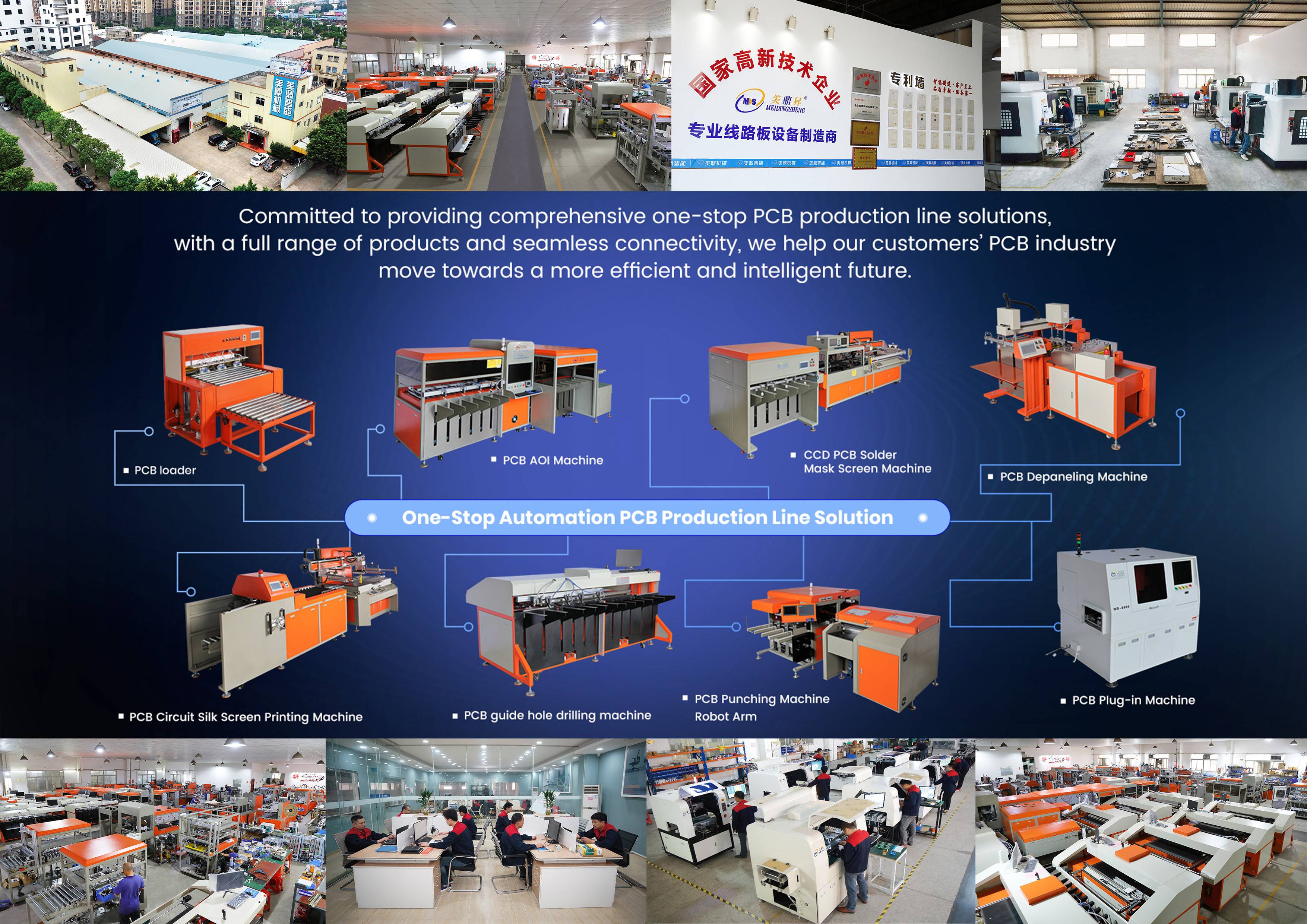
by "Ishfaq Sassoli" <ishfaqsassoli287@gmail.com> - 03:18 - 11 Jun 2025 -
Shopify Tech Stack
Shopify Tech Stack
Note: This article is written in collaboration with the Shopify engineering team.͏ ͏ ͏ ͏ ͏ ͏ ͏ ͏ ͏ ͏ ͏ ͏ ͏ ͏ ͏ ͏ ͏ ͏ ͏ ͏ ͏ ͏ ͏ ͏ ͏ ͏ ͏ ͏ ͏ ͏ ͏ ͏ ͏ ͏ ͏ ͏ ͏ ͏ ͏ ͏ ͏ ͏ ͏ ͏ ͏ ͏ ͏ ͏ ͏ ͏ ͏ ͏ ͏ ͏ ͏ ͏ ͏ ͏ ͏ ͏ ͏ ͏ ͏ ͏ ͏ ͏ ͏ ͏ ͏ ͏ ͏ ͏ ͏ ͏ ͏ ͏ ͏ ͏ ͏ ͏ ͏ ͏ ͏ ͏ ͏ ͏ ͏ ͏ ͏ ͏ ͏ ͏ ͏ ͏ ͏ ͏ ͏ ͏ ͏ ͏ ͏ ͏ ͏ ͏ ͏ ͏ ͏ ͏ ͏ ͏ ͏ ͏ ͏ ͏ ͏ ͏ ͏ ͏ ͏ ͏ ͏ ͏ ͏ ͏ ͏ ͏ ͏ ͏ ͏ ͏ ͏ ͏ ͏ ͏ ͏ ͏ ͏ ͏ ͏ ͏ ͏ ͏ ͏ ͏ ͏ ͏ ͏ ͏ ͏ ͏ ͏ ͏ ͏ ͏ ͏ ͏ ͏ ͏ ͏ ͏ ͏ ͏ ͏ ͏ ͏ ͏ ͏ ͏ ͏ ͏ ͏ ͏ ͏ ͏ ͏ ͏ ͏ ͏ ͏ ͏ ͏ ͏ ͏ ͏ ͏ ͏ ͏ ͏ ͏ ͏ ͏ ͏ ͏ ͏ ͏ ͏ ͏ ͏ ͏ ͏ Forwarded this email? Subscribe here for moreNote: This article is written in collaboration with the Shopify engineering team. Special thanks to the Shopify engineering team for sharing details with us about their tech stack and also for reviewing the final article before publication. All credit for the technical details and diagrams shared in this article goes to the Shopify Engineering Team.
Shopify handles scale that would break most systems.
On a single day (Black Friday 2024), the platform processed 173 billion requests, peaked at 284 million requests per minute, and pushed 12 terabytes of traffic every minute through its edge.
These numbers aren’t anomalies. They’re sustained targets that Shopify strives to meet. Behind this scale is a stack that looks deceptively simple from the outside: Ruby on Rails, React, MySQL, and Kafka.
But that simplicity hides sharp architectural decisions, years of refactoring, and thousands of deliberate trade-offs.
In this article, we map the tech stack powering Shopify from the modular monolith that still runs the business, to the pods that isolate failure domains, to the deployment pipelines that ship hundreds of changes a day. It covers the tools, programming languages, and patterns Shopify uses to stay fast, resilient, and developer-friendly at incredible scale.
Shopify Backend Architecture
Shopify’s backend runs on Ruby on Rails. The original codebase, written in the early 2000s, still forms the heart of the system. Rails offers fast development, convention over configuration, and strong patterns for database-backed web applications. Shopify also uses Rust for its systems programming language.
While most startups eventually rewrite their early frameworks, Shopify doubled down to help ensure Ruby and Rails are 100-year tools that will continue to merit being in their toolchain of choice. Instead of moving on to another framework, Shopify pushed it further. They invested in:
YJIT, a Just-in-Time compiler for Ruby built on Rust that improves runtime performance without changing developer ergonomics.
Sorbet, a static type checker built specifically for Ruby. Shopify contributed heavily to Sorbet and made it a first-class part of the stack.
Rails Engines, a built-in Rails feature repurposed as a modularity mechanism. Each engine behaves like a mini-application, allowing isolation, ownership, and eventual extraction if needed.
The result is one of the largest and longest-running Rails applications in production.
Modularization Strategy
Shopify runs a modular monolith. That phrase gets thrown around a lot, but in Shopify’s case, it means this: the entire codebase lives in one repository, runs in a single process, but is split into independently deployable components with strict boundaries.
Each component defines a public interface, with contracts enforced via Sorbet.
These interfaces aren’t optional. They’re a way to prevent tight coupling, allow safe refactoring, and make the system feel smaller than it is. Developers don’t need to understand millions of lines of code. They need to know the contracts their component depends on and trust those contracts will hold.
To manage complexity, components are organized into logical layers:
Platform: Foundational services like identity, shop state, and database abstractions
Supporting: Business domains like inventory, shipping, or merchandising
Frontend-facing: External interfaces like the online store or GraphQL APIs
This layering prevents cyclic dependencies and encourages clean flow across domains.
To support this at scale, Shopify maintains a comprehensive system of static analysis tools, exception monitoring dashboards, and differentiated application/business metrics to track component health across the company.
This modular structure doesn’t make development effortless. It introduces boundaries, which can feel like friction. However, it keeps teams aligned, reduces accidental coupling, and lets Shopify evolve without losing control of its core.
Frontend Technologies
Shopify’s frontend has gone through multiple architectural shifts, each one reflecting changes in the broader web ecosystem and lessons learned under scale.
The early days used standard patterns: server-rendered HTML templates, enhanced with jQuery and prototype.js. As frontend complexity grew, Shopify built Batman.js, its single-page application (SPA) framework. It offered reactivity and routing, but like most in-house frameworks, it came with long-term maintenance overhead.
Eventually, Shopify shifted back to simpler patterns: statically rendered HTML and vanilla JavaScript. However, that also had limits. Once the broader ecosystem matured, particularly around React and TypeScript, the team made a clean move forward.
Today, the Shopify Admin interface runs on React, React Router by Remix, written in TypeScript, and driven entirely by GraphQL. It follows a strict separation: no business logic in the client, no shared state across views. The Admin is one of Shopify’s biggest apps, built on Remix that behaves as a stateless GraphQL client. Each page fetches exactly the data it needs, when it needs it.
This discipline enforces consistency across platforms. Mobile apps and web admin screens speak the same language (GraphQL), reducing duplication and misalignment between surfaces.
Mobile Development with React Native
Mobile development at Shopify follows a similar philosophy: reuse where possible, specialize where needed.
Every major app now runs on React Native. The goal of using a single framework is to share code, reduce drift between platforms, and improve developer velocity across Android and iOS.
Shared libraries power common concerns like authentication, error tracking, and performance monitoring. When apps need to drop into native for camera access, payment hardware, or long-running background tasks, they do so through well-defined native modules.
Shopify teams also contribute directly to React Native ecosystem projects like Mobile Bridge (for enabling web to trigger native UI elements), Skia (for fast 2D rendering), WebGPU (that enables modern GPU APIs and enables general-purpose GPU computation for AI/ML), and Reanimated (for performant animations). In some cases, Shopify engineers co-captain React Native releases.
Programming Languages and Tooling
Shopify’s language choices reflect its commitment to developer productivity and operational resilience.
Ruby remains the backbone of Shopify’s backend. It powers the monolith, the engines, and most of the internal services.
Sorbet, a static type checker for Ruby, fills the safety gap traditionally left open in dynamically typed systems. It enables early feedback on interface violations and contract boundaries.
TypeScript is a first-class language on the frontend. Paired with React, it provides predictable behavior across the web and mobile surfaces.
JavaScript still appears in shared libraries and older assets, but most modern development favors TypeScript for its tooling and clarity.
Lua is used for custom scripting inside OpenResty, Shopify’s edge-layer HTTP server built on Nginx. This enables high-performance, scriptable load balancing.
GraphQL is served from the Ruby backend and used across all major clients, such as web, mobile, and third-party apps.
Kubernetes YAML defines infrastructure deployments, service configurations, and environment scaling parameters.
Remix is a full stack web framework used across various aspects of the platform — Shopify Admin Interface, marketing websites, and Hydrogen, Shopify's headless commerce framework for building custom storefronts.
Developer Tooling & Open Source Contributions
A large monolith doesn’t stay healthy without support. Shopify has developed an ecosystem of internal and open-source tools to enforce structure, automate safety checks, and reduce operational toil.
Packwerk enforces dependency boundaries between components in the monolith. It flags violations early, before they cause architectural drift.
Tapioca automates the generation of Sorbet RBI (Ruby Interface) files, keeping static type definitions in sync with actual code.
Bootsnap improves startup times for Ruby applications by caching expensive computations like YAML parsing and gem loading.
Maintenance Tasks standardize background job execution. They make recurring tasks idempotent, safe to rerun, and easy to observe.
Toxiproxy simulates unreliable network conditions such as latency, dropped packets, or timeouts, allowing services to test their behavior under stress.
TruffleRuby is a high-performance Ruby implementation developed by Oracle. Shopify contributes to this as part of its broader effort to push Ruby further.
Semian is a circuit breaker library for Ruby, protecting critical resources like Redis or MySQL from cascading failures during partial outages.
Roast is a convention-oriented framework for creating structured AI workflows, maintained and used internally by the Augmented Engineering team at Shopify.
A much more exhaustive list of open-source software supported by Shopify is also present here.
Databases, Caching, and Queuing
There are two main categories here:
Primary Database: MySQL
Shopify uses MySQL as its primary relational database, and has done so since the platform's early days. However, as merchant volume and transactional throughput grew, the limits of a single instance became unavoidable.
In 2014, Shopify introduced sharding. Each shard holds a partition of the overall data, and merchants are distributed across those shards based on deterministic rules. This works well in commerce, where tenant isolation is natural. One merchant’s orders don’t need to query another merchant’s inventory.
Over time, Shopify replaced the flat shard model with Pods. A pod is a fully isolated slice of Shopify, containing its own MySQL instance, Redis node, and Memcached cluster. Each pod can run independently, and each one can be deployed in a separate geographic region.
This model solves two problems:
It removes single points of failure. An issue in one pod won't cascade across the fleet.
It allows Shopify to scale horizontally by adding more pods instead of vertically scaling the database.
By pushing isolation to the infrastructure level, Shopify contains failure domains and simplifies operational recovery.
Caching and Queues
Shopify relies on two core systems for caching and asynchronous work: Memcached and Redis.
Memcached handles key-value caching. It speeds up frequently accessed reads, like product metadata or user session info, without burdening the database.
Redis powers queues and background job processing. It supports Shopify’s asynchronous workflows: webhook delivery, email sends, payment retries, and inventory syncs.
But Redis wasn’t always scoped cleanly. At one point, all database shards shared a single Redis instance. A failure in that central Redis brought down the entire platform. Internally, the incident is still known as “Redismageddon.”
The lesson Shopify took from this incident was clear: never centralize a system that’s supposed to isolate work. Afterward, Redis was restructured to match the pod model, giving each pod its own Redis node. Since then, outages have been localized, and the platform has avoided global failures tied to shared infrastructure.
Messaging and Communication Between Services
There are two main categories of the same:
Eventing & Streaming
Shopify uses Kafka as the backbone for messaging and event distribution. It forms the spine of the platform’s internal communication layer, decoupling producers from consumers, buffering high-volume traffic, and supporting real-time pipelines that feed search, analytics, and business workflows.
At peak, Kafka at Shopify has handled 66 million messages per second, a throughput level that few systems encounter outside large-scale financial or streaming platforms.
This messaging layer serves several use cases:
Emitting domain events when core objects change (for example, order created, product updated)
Driving ML inference workflows with near real-time updates
Powering search indexing, inventory tracking, and customer notifications
By relying on Kafka, Shopify avoids tight coupling between services. Producers don't wait for consumers. Consumers process at their own pace. And when something goes wrong, like a downstream service crashing, the event stream holds the data until the system recovers.
That’s a practical way to build resilience into a fast-moving platform.
API Interfaces
For synchronous interactions, Shopify services communicate over HTTP, using a mix of REST and GraphQL.
REST APIs still power much of the internal communication, especially between older services and support tools.
GraphQL is the preferred interface for frontend and mobile clients. It allows precise data queries, reduces over-fetching, and aligns with Shopify’s philosophy of pushing complexity to the server.
However, as the number of services grows, this model starts to strain. Synchronous calls introduce tight coupling and hidden failure paths, especially when one service transitively depends on five others.
To address this, Shopify is actively exploring RPC standardization and service mesh architectures. The goal is to build a communication layer that’s:
Observably reliable
Easy to reason about
Standardized across all environments
ML Infrastructure at Shopify
The ML infrastructure at Shopify could be divided into two main parts:
Real-Time Search with Embeddings
Shopify’s storefront search doesn’t rely on traditional keyword matching. It uses semantic search powered by text and image embeddings: vector representations of product metadata and visual features that enable more relevant, contextual search results.

Source: Shopify Engineering Blog This system runs at production scale. Shopify processes around 2,500 embeddings per second, translating to over 216 million per day. These embeddings cover multiple modalities, including:
Product titles and descriptions (text)
Images and thumbnails (visual content)
Each embedding is generated in near real time and immediately published to downstream consumers that use them to update search indices and personalize results.
The embedding system also performs intelligent deduplication. For example, visually identical images are grouped to avoid unnecessary inference. This optimization alone reduced image embedding memory usage from 104 GB to under 40 GB, freeing up GPU resources and cutting costs across the pipeline.
Data Pipeline Infrastructure
Under the hood, Shopify runs its ML pipelines on Apache Beam, executed through Google Cloud Dataflow. This setup supports:
Streaming inference at scale.
GPU acceleration through custom ModelHandler components.
Efficient pipeline parallelism using optimized thread pools.
Inference jobs are structured to process embeddings as quickly and cheaply as possible. The pipeline uses a low number of concurrent threads (down from 192 to 64) to prevent memory contention, ensuring that inference performance remains predictable under load.
Shopify trades off between latency, throughput, and infrastructure cost. The current configuration strikes that balance carefully:
Embeddings are generated fast enough for near-real-time updates
GPU memory is used efficiently
Redundant computation is avoided through smart caching and pre-filtering
For offline analytics, Shopify stores embeddings in BigQuery, allowing large-scale querying, trend analysis, and model performance evaluation without affecting live systems.
DevOps, CI/CD & Deployment
This area can be divided into the following parts:
Kubernetes-Based Deployment
Shopify deploys infrastructure using Kubernetes, running on Google Kubernetes Engine (GKE). Each Shopify pod, an isolated unit containing its own MySQL, Redis, and Memcached stack, is defined declaratively through Kubernetes YAML, making it easy to replicate, scale, and isolate across regions.
The runtime environment uses Docker containers for packaging applications and OpenResty, built on Nginx with embedded Lua scripting, for custom load balancing at the edge. These Lua scripts give Shopify fine-grained control over HTTP behavior, enabling smart routing decisions and performance optimizations closer to the user.
Before Kubernetes, deployment was managed through Chef, a configuration management tool better suited for static environments. As the platform evolved, so did the need for a more dynamic, container-based architecture. The move to Kubernetes replaced slow, manual provisioning with fast, declarative infrastructure-as-code.
CI/CD Process
Shopify’s monolith contains over 400,000 unit tests, many of which exercise complex ORM behaviors. Running all of them serially would take hours, maybe days. To stay fast, Shopify relies on Buildkite as its CI orchestrator. Buildkite coordinates test runs across hundreds of parallel workers, slashing feedback time and keeping builds within a 15–20 minute window.
Once the build passes, Shopify's internal deployment tools take over and offer visibility into who's deploying what, and where.

Source: Shopify Engineering Blog Deployments don’t go straight to production. Instead, ShipIt uses a Merge Queue to control rollout. At peak hours, only 5–10 commits are merged and deployed at a time. This throttling makes issues easier to trace and minimizes the blast radius when something breaks.
Notably, Shopify doesn’t rely on staging environments or canary deploys. Instead, they use feature flags to control exposure and fast rollback mechanisms to undo bad changes quickly. If a feature misbehaves, it can be turned off without redeploying the code.
Observability, Reliability, and Security
This area can be divided into multiple parts, such as:
Observability Infrastructure
Shopify takes a structured, service-aware approach to observability. At the center of this is ServicesDB, an internal service registry that tracks:
Service ownership and team accountability
Runtime logs and exception reports
Uptime and operational health
Gem versions and security patch status
Dependency graphs across applications
ServicesDB catalog metadata and enforces good practices. When a service falls out of compliance (for example, due to outdated gems or missing logs), it automatically opens GitHub issues and tags the responsible team. This creates continuous pressure to maintain service quality across the board.
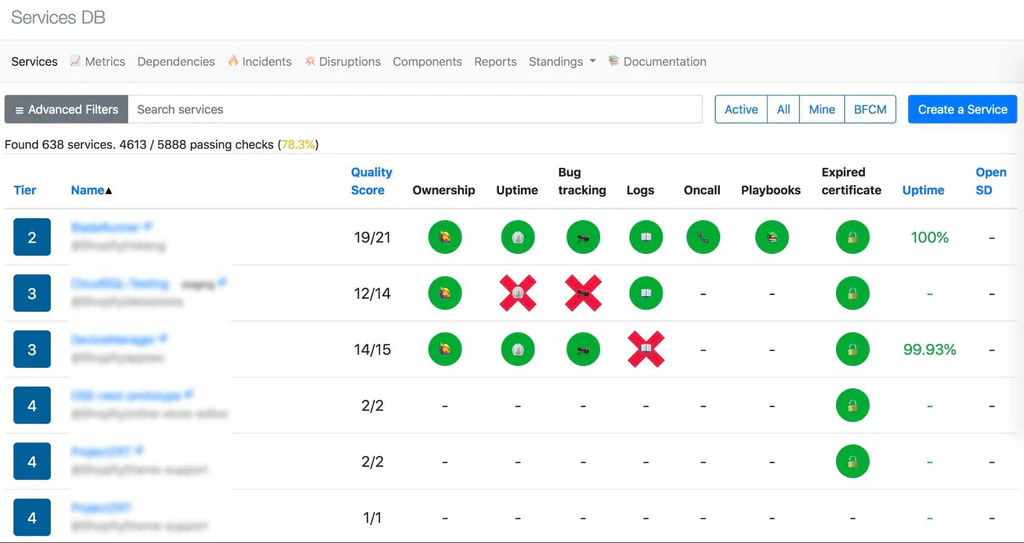
Source: Shopify Engineering Blog Incident response isn’t siloed into a single ops team. Shopify uses a lateral escalation model: all engineers share responsibility for uptime, and escalation happens based on domain expertise, not job title. This encourages shared ownership and reduces handoff delays during critical outages.
For fault tolerance, Shopify leans on two key tools:
Semian, a circuit breaker library for Ruby, helps protect core services like Redis and MySQL from cascading failures during degradation.
Toxiproxy lets engineers simulate bad network conditions (latency spikes, dropped packets, service flaps) before those issues appear in production. It’s used in test environments to validate resilience assumptions early.
Supply Chain & Security
Security isn’t an afterthought in Shopify’s stack, but part of the ecosystem investment. Since the company relies heavily on Ruby, it also works actively to secure the Ruby community at large.
Key efforts include:
Ongoing contributions to Bundler and RubyGems, focusing on dependency integrity and package security.
A close partnership with Ruby Central, the non-profit that oversees Ruby infrastructure.
A $500,000 commitment to fund academic research and performance improvements in the Ruby ecosystem.
The goal isn’t just to secure Shopify’s stack, but to strengthen the foundation shared by thousands of developers who depend on the same tools.
Shopify’s Scale
Shopify's architecture isn’t theoretical. It’s built to withstand real-world pressure—Black Friday flash sales, celebrity product drops, and continuous developer activity across a global platform. These numbers put that scale in context.
$5 billion in Gross Merchandise Volume (GMV) processed on Black Friday.
284 million requests per minute at the edge during peak load.
173 billion total requests handled in a single 24-hour period.
12 terabytes of traffic egress per minute across Shopify’s edge network.
45 million database queries per second at peak read load.
7.6 million database writes per second during transactional bursts.
66 million Kafka messages per second, sustaining Shopify’s real-time event pipelines.
100,000+ unit tests executed in CI on every monolith build.
216 million embeddings processed per day through ML inference pipelines.
>99.9% crash-free session rate across React Native mobile apps.
2.8 million lines of Ruby code in the monolith, with over 500,000 commits in version control.
100+ isolated pods, each containing its stack (MySQL, Redis, Memcached).
100+ internal Rails apps, maintained alongside the monolith using shared standards.
References:
Open-source tools that we use
SPONSOR US
Get your product in front of more than 1,000,000 tech professionals.
Our newsletter puts your products and services directly in front of an audience that matters - hundreds of thousands of engineering leaders and senior engineers - who have influence over significant tech decisions and big purchases.
Space Fills Up Fast - Reserve Today
Ad spots typically sell out about 4 weeks in advance. To ensure your ad reaches this influential audience, reserve your space now by emailing sponsorship@bytebytego.com.
Like
Comment
Restack
© 2025 ByteByteGo
548 Market Street PMB 72296, San Francisco, CA 94104
Unsubscribe
by "ByteByteGo" <bytebytego@substack.com> - 11:40 - 11 Jun 2025 -
How happy are you at work?
On McKinsey Perspectives
Linking satisfaction and performance 




Brought to you by Alex Panas, global leader of industries, & Axel Karlsson, global leader of functional practices and growth platforms
Welcome to the latest edition of Only McKinsey Perspectives. We hope you find our insights useful. Let us know what you think at Alex_Panas@McKinsey.com and Axel_Karlsson@McKinsey.com.
—Alex and Axel
•
Struggling to prioritize well-being. Most people want to have happy colleagues at work, yet many leaders aren’t prioritizing workplace well-being, reflects Jan-Emmanuel De Neve, director of the University of Oxford’s Wellbeing Research Centre and coauthor of Why Workplace Wellbeing Matters: The Science Behind Employee Happiness and Organizational Performance. While most managers recognize that improving workplace well-being will benefit their businesses, only about one-third of senior staff considers it to be a strategic priority, De Neve explains. Moreover, only half of those leaders have a specific plan to improve job satisfaction.
•
Good for business and society. There’s a business case for well-being and a social one, too, says De Neve. Workplace well-being affects business performance through productivity, retention, and recruitment, all of which boost companies’ bottom lines. Investing in workplace well-being is also a social imperative, De Neve shares: When people go home in a better mood, there are ripple effects on their communities. Get early access to the full Author Talks interview on the McKinsey Insights App and learn more about the key drivers of workplace well-being.
—Edited by Belinda Yu, editor, Atlanta
This email contains information about McKinsey's research, insights, services, or events. By opening our emails or clicking on links, you agree to our use of cookies and web tracking technology. For more information on how we use and protect your information, please review our privacy policy.
You received this email because you subscribed to the Only McKinsey Perspectives newsletter, formerly known as Only McKinsey.
Copyright © 2025 | McKinsey & Company, 3 World Trade Center, 175 Greenwich Street, New York, NY 10007
by "Only McKinsey Perspectives" <publishing@email.mckinsey.com> - 01:06 - 11 Jun 2025 -
High-quality switch supplier invites you to cooperate
Dear Info,
We are a leading high-quality switch manufacturer. With many years of industry experience and high-quality products, we serve many partners around the world and are widely praised.
Our core products:
Micro switch: high sensitivity, suitable for electrical appliances, automobiles, industrial equipment, medical and other industries;
Rocker switch: diversified design to meet different needs;
Push button switch: durable, widely used in a variety of industries;
Keyboard switch: comfortable feel, designed for user experience.
Our factory has passed ISO certification and provides fast delivery, OEM/ODM services, and can tailor solutions according to your specific needs.
I hope to have the opportunity to understand your company's needs and explore the possibility of cooperation. If you need samples or quotations, please feel free to contact me and I will provide you with detailed information.
Best regards&Thanks
David Wu
Yueqing Tongda Wire Electric Factory
ADD:No.8 Chuanger Road,Yuqing Bay Port Area, Wenzhou,Zhejiang,325609
Tel: 0086-577 57158583
Mobil: 0086-13780102300
Web: www.chinaweipeng.com
Mail: wdm@tdweipeng.com(If email Failed, pls send to weipeng@tdweipeng.com)
Made-In-China: tongdaswitch.en.made-in-china.com
by "Momen Slama" <momenslama451@gmail.com> - 10:01 - 10 Jun 2025











